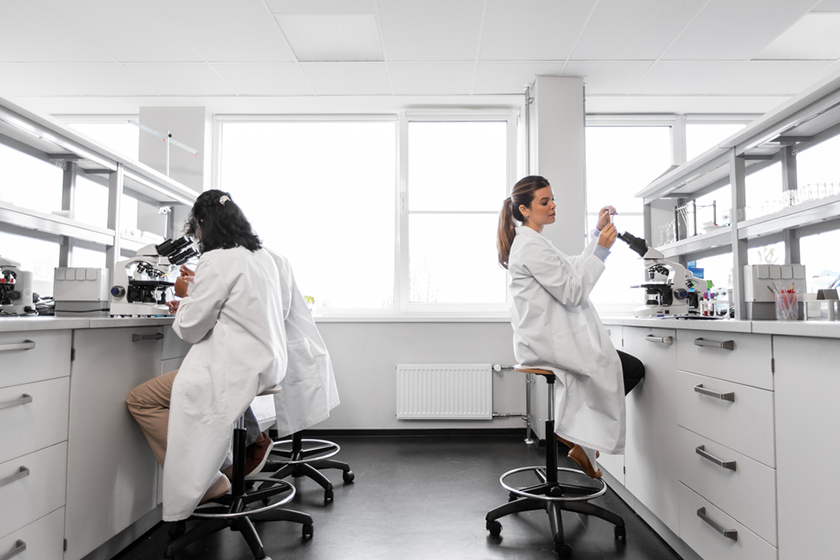Fire Safety And Prevention In Laboratory Settings

Laboratories are environments where fire risks are especially high due to the presence of chemicals, equipment, and procedures that involve heat or open flames. Providing for fire safety in the lab is critical to protect not only the people working in these settings but also the sensitive research, valuable data, and expensive equipment. The use of proper fire safety measures in laboratory settings is a multifaceted approach that involves proper planning, equipment maintenance, and staff training.
Knowing the Risks
The first step in promoting fire safety in the lab is knowing the specific risks associated with laboratory environments. Many laboratories contain flammable chemicals, combustible materials, and complex electrical equipment – all of which can contribute to a fire hazard if not properly managed. Besides these materials, the procedures carried out in labs – like heating, distillation, or the use of open flames – further increase the likelihood of a fire incident.
Another aspect of risk involves the layout and design of the laboratory itself. Poor ventilation, cluttered workspaces, and improper storage of chemicals can create environments where fires can easily ignite and spread. Recognizing these potential hazards is imperative for developing a fire safety plan.
Putting Preventive Measures in Place
Once the risks are identified, the next step is to put preventive measures in place that deal with these hazards. Proper storage of chemicals is one of the most critical aspects of fire safety in the lab.
Flammable chemicals should be stored in appropriate containers and cabinets, away from heat sources or direct sunlight. Also, incompatible chemicals should be stored separately to prevent dangerous reactions that could lead to a fire.
Another preventive measure is making sure that all laboratory equipment is regularly inspected and maintained. Electrical equipment, in particular, should be checked for faulty wiring, damaged cords, or other potential fire hazards. Regular maintenance of fire alarm services and ventilation systems is also necessary to detect and prevent fires.
In labs where open flames are used (like Bunsen burners or torches), strict protocols should be in place to help guarantee their safe operation. It is also advisable to minimize the use of open flames where possible. Use alternatives like hot plates or electric heaters when appropriate.
Importance of Proper Training
Even with all the preventive measures in place, the human factor remains one of the most necessary parts of fire safety in the lab. All lab personnel should be thoroughly trained in fire safety procedures, including how to handle chemicals safely, how to operate fire extinguishers, and what to do in the event of a fire.
Training should also include the proper use of fire alarm systems and the importance of promptly reporting any potential fire hazards. Lab personnel should be encouraged to remain vigilant and proactive in identifying and addressing fire risks. This proactive approach can help reduce the likelihood of a fire incident in the laboratory.
Emergency Response Planning
Besides preventive measures, having a well-developed emergency response plan is needed for fire safety in the lab. The plan should include clear procedures for evacuating the laboratory in the event of a fire, as well as instructions for using fire alarm services and other emergency equipment. The plan should be readily accessible to all lab personnel and regularly reviewed and updated to account for any changes in the lab environment or procedures.
Emergency response planning also involves coordination with emergency management and services outside the laboratory. This includes making certain that local fire departments are familiar with the lab’s layout and the types of chemicals and equipment present. In the event of a fire, this information is needed for the emergency responders to contain and extinguish the fire.
Why Use Fire Safety Equipment?
Having the right fire safety equipment in place is another component of fire safety in the lab. This includes fire alarm systems and extinguishers, but also specialized equipment like chemical spill kits, fire blankets, and fume hoods. All fire safety equipment should be easily accessible and regularly inspected so that it is in proper working order.
Fire alarm services play a major role in bringing early warning of a fire. They allow lab personnel to evacuate safely and reduce the potential damage to the laboratory. Make sure that fire alarm systems are connected to emergency management and services so a prompt response can be initiated as soon as an alarm is triggered.
Fire extinguishers should be chosen based on the types of fires that are most likely to occur in the laboratory. For example, labs that work with flammable liquids should have Class B fire extinguishers. Those working with electrical equipment should have Class C extinguishers. Training in the proper use of extinguishers should be part of the lab personnel’s fire safety training.
Continuous Improvement
Fire safety in laboratory settings is not a one-time task but an ongoing process that requires continuous improvement. Regular audits of fire safety procedures, equipment, and training programs can help identify areas for improvement and make certain that fire safety in the lab remains a top priority. Feedback from lab personnel can also give valuable insights into potential fire hazards or areas where safety protocols could be improved.
Fire Safety Alarms—Your Partner in Lab Safety
When it comes to fire safety in the lab, working with a reliable fire safety company is recommended. Fire Safety Alarms, Inc. (FSA) has been a trusted provider of fire alarm services since 1979, offering top-notch service and maintenance programs that are unparalleled in the industry.
Our installation and technical crews are certified and trained to handle the unique needs of laboratory environments, so your lab is equipped with the best fire alarm systems available. We take pride in our commitment to customer service and the safety of the facilities we serve.
Call us at 201-963-4030 or use our online form to reach out today. We’re here to help keep your lab safe.
